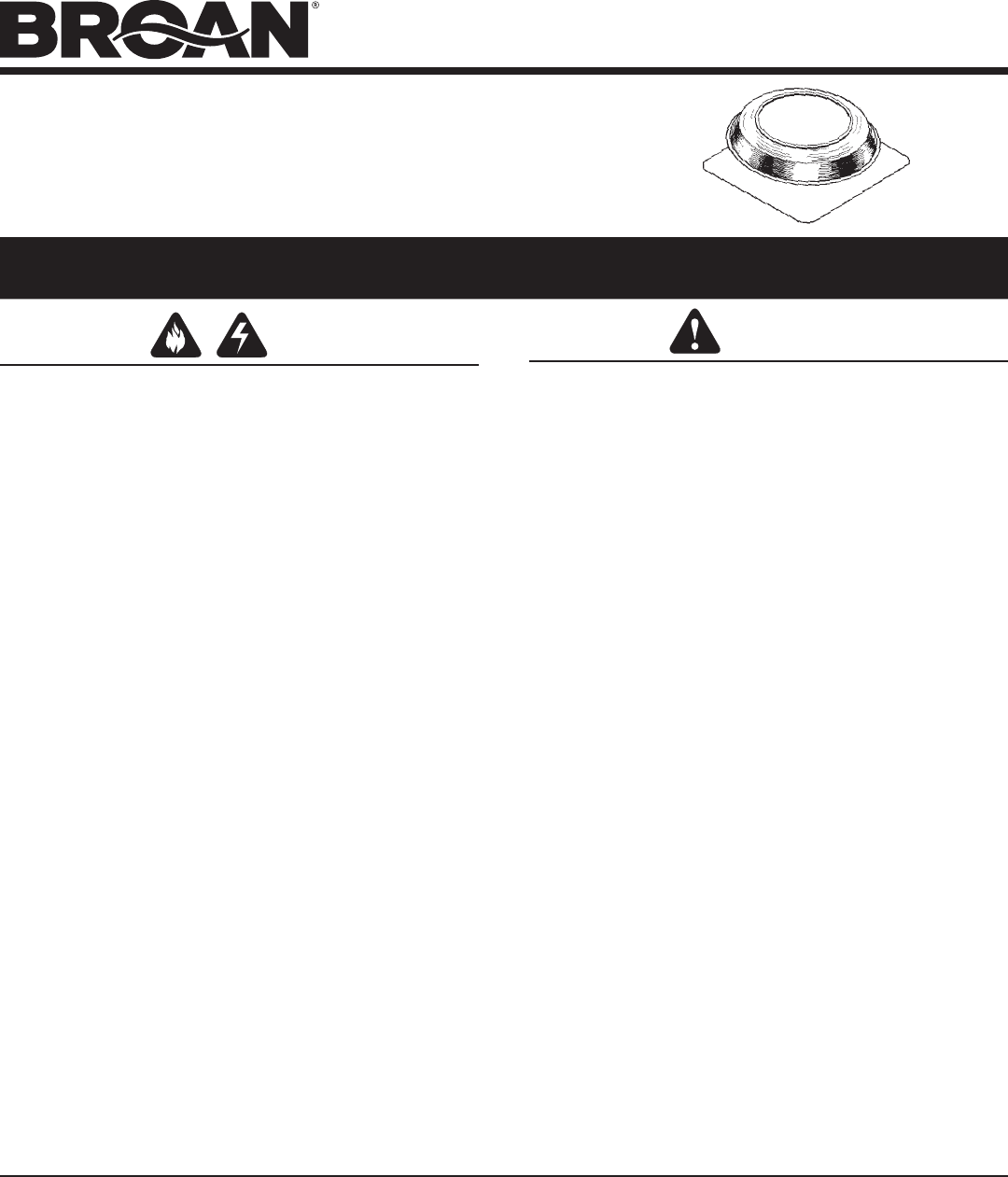
Page 1
MODELS 350 • 350BK • 350BR • 355 • 355BK • 355BR
356 • 356BK • 356BR • 358
WARNING
TO REDUCE THE RISK OF FIRE, ELECTRIC SHOCK, OR INJURY
TO PERSONS, OBSERVE THE FOLLOWING:
1. Use this unit only in the manner intended by the manufacturer.
If you have questions, contact the manufacturer at the address
or telephone number listed in the warranty.
2. Before servicing or cleaning unit, switch power off at service
panel and lock the service disconnecting means to prevent
power from being switched on accidentally. When the service
disconnecting means cannot be locked, securely fasten a
prominent warning device, such as a tag, to the service panel.
3. Installation work and electrical wiring must be done by a qualified
person(s) in accordance with all applicable codes and standards,
including fire-rated construction codes and standards.
4. Sufficient air is needed for proper combustion and exhausting
of gases through the flue (chimney) of fuel burning equipment
to prevent backdrafting. Follow the heating equipment manufac-
turer's guidelines and safety standards such as those published
by the National Fire Protection Association (NFPA), and the
American Society for Heating, Refrigeration and Air Condition-
ing Engineers (ASHRAE), and the local code authorities.
5. When cutting or drilling into wall or ceiling, do not damage
electrical wiring and other hidden utilities.
6. The wiring must be permanent. DO NOT USE AN EXTENSION
CORD! Use 14 GA. MINIMUM copper wire. Although the Powered
Attic Ventilator may be wired directly to power, we advise that
some type of shut off switch be installed in the line. Please see
the section on electrical wiring for suggested wiring diagrams
and instructions.
7. This unit must be grounded.
8. Do not use this unit with any solid state speed control device
(Models 356 and 358 only).
CAUTION
1. For general ventilating use only. Do not use to exhaust hazard-
ous or explosive materials and vapors.
2. To avoid motor bearing damage and noisy and/or unbalanced
impellers, keep drywall spray, construction dust, etc. off power
unit.
3. This unit has an unguarded impeller. Do not use in locations
readily accessible to people or animals.
4. Fan is equipped with a thermostat which may start fan automati-
cally. To reduce risk of injury or electric shock while servicing or
cleaning unit, switch power off at service panel and lock service
panel to prevent power from being switched on accidentally.
When the service disconnecting means cannot be locked,
securely fasten a prominent warning device, such as a tag, to
the service panel.
5. Home Ventilating Institute (HVI) recommends one square foot
of open air inlet per 300 cfm of fan capacity. The best location
for these air intake vents are under the eaves with direct ac-
cess to the attic. Failure to provide these intakes could cause
natural-draft gas appliances to backdraft.
6. Your attic fan installation will create a screened opening into
your attic space. During a heavy rain storm there could be a
light spray of rain into this attic space. This is a normal condi-
tion with all attic ventilators and will not cause any damage to
the structure. We recommend that you do not store any valu-
able articles directly under the fan opening in the roof. During
extreme rain and wind storms you may want to turn on your
attic ventilator to prevent excess moisture accumulation in your
attic.
7. Records show, under ideal conditions, exposed galvanized steel
can remain rust free up to 100 years. For best protection, the
exposed portion of the roof sheet should be painted, especially
in areas of unusually high industrial air pollution. Follow paint
manufacturer's instructions for good adhesion.
8. This ventilator is intended for roof installation. The Broan Model
353 Gable Mount Ventilator is available for side wall applications.
9. The dome may be painted with a high-quality paint. Follow
the paint manufacturer's recommendations for PVC plastic or
aluminum, as appropriate.
10. Please read specification label on product for further information
and requirements.
ROOF-MOUNT
POWERED ATTIC VENTILATOR
READ AND SAVE THESE INSTRUCTIONS
r
Slotted Screwdriver
r
Drill
r
1/4" Drill Bit
r
Sabre Saw or Keyhole Saw
r
Hammer
r
Ruler
TOOLS AND MATERIALS REQUIRED
r
Pencil
r
Utility Knife
r
Pry Bar (to remover roofing nails)
r
Roofing Cement
r
Galvanized Roofing Nails (1¾" min.)
r
Electrical Supplies (to comply with codes)
